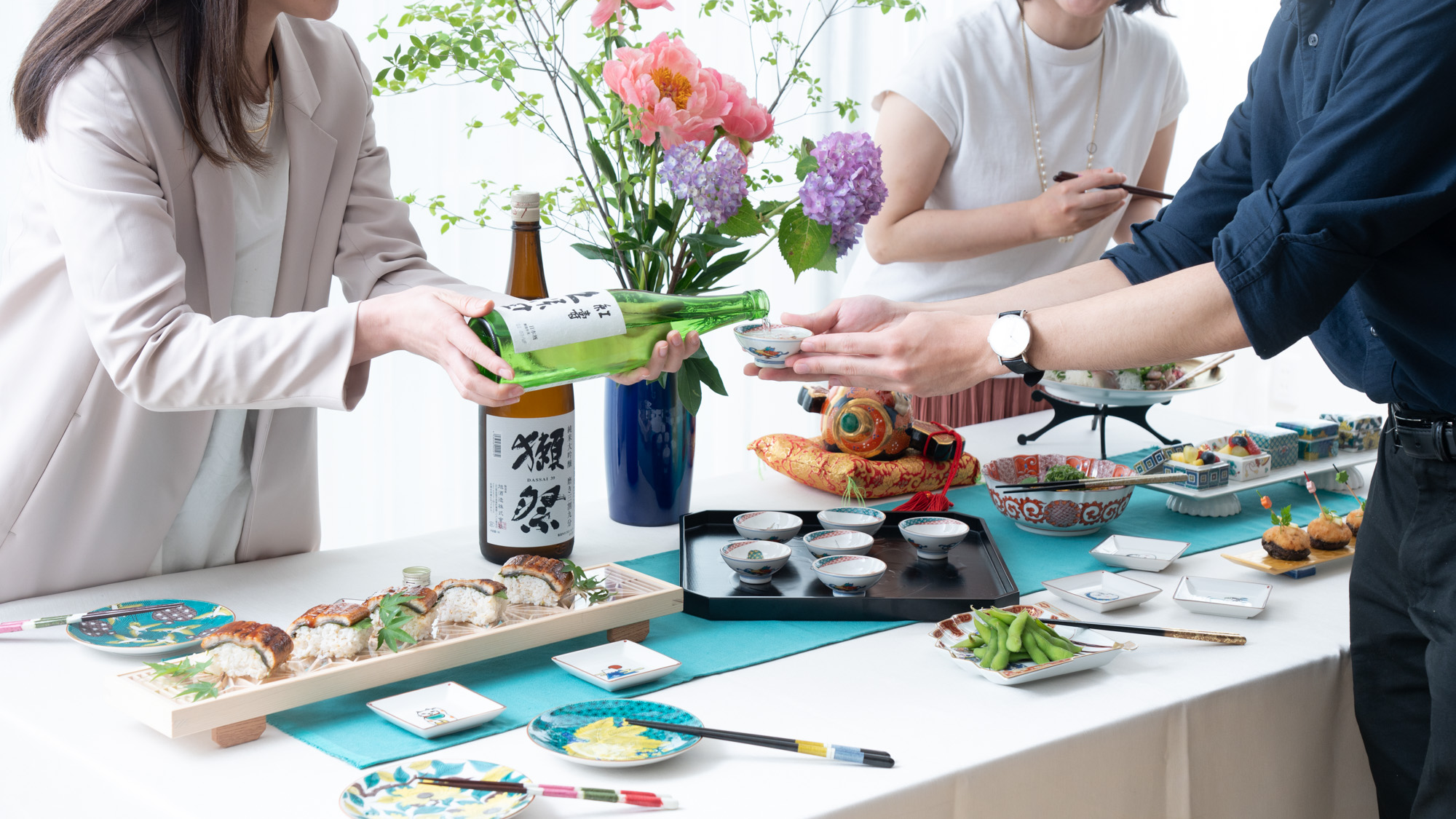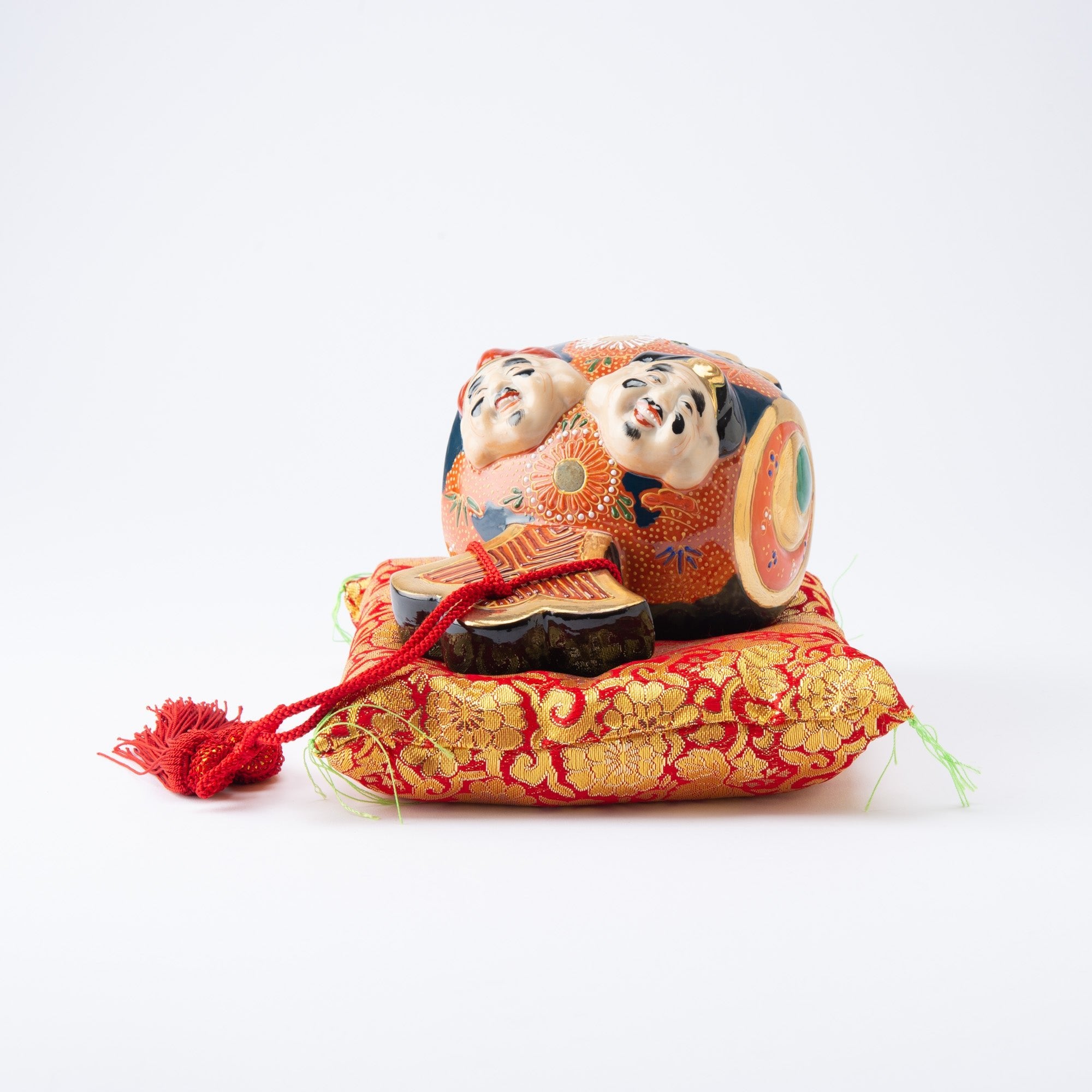
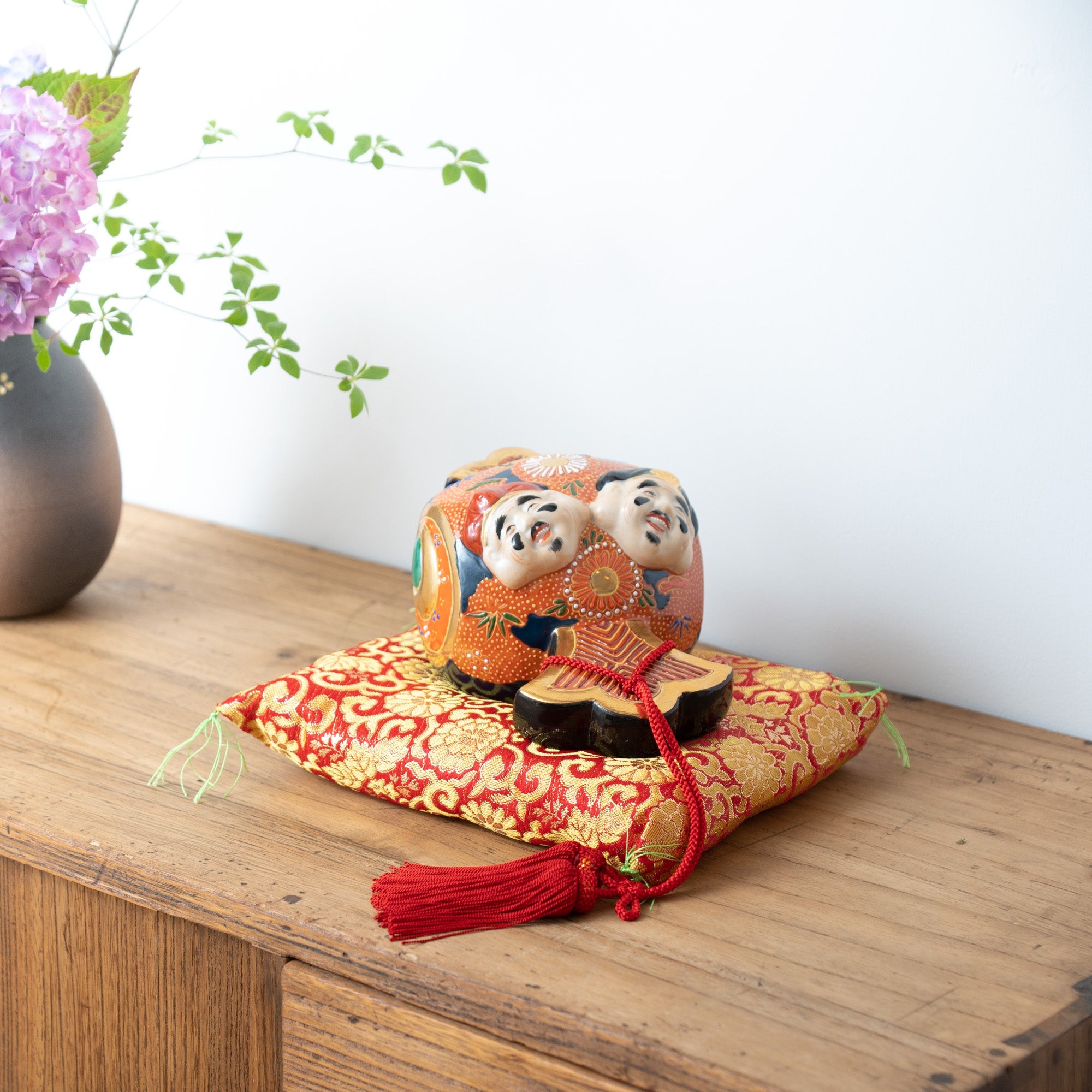
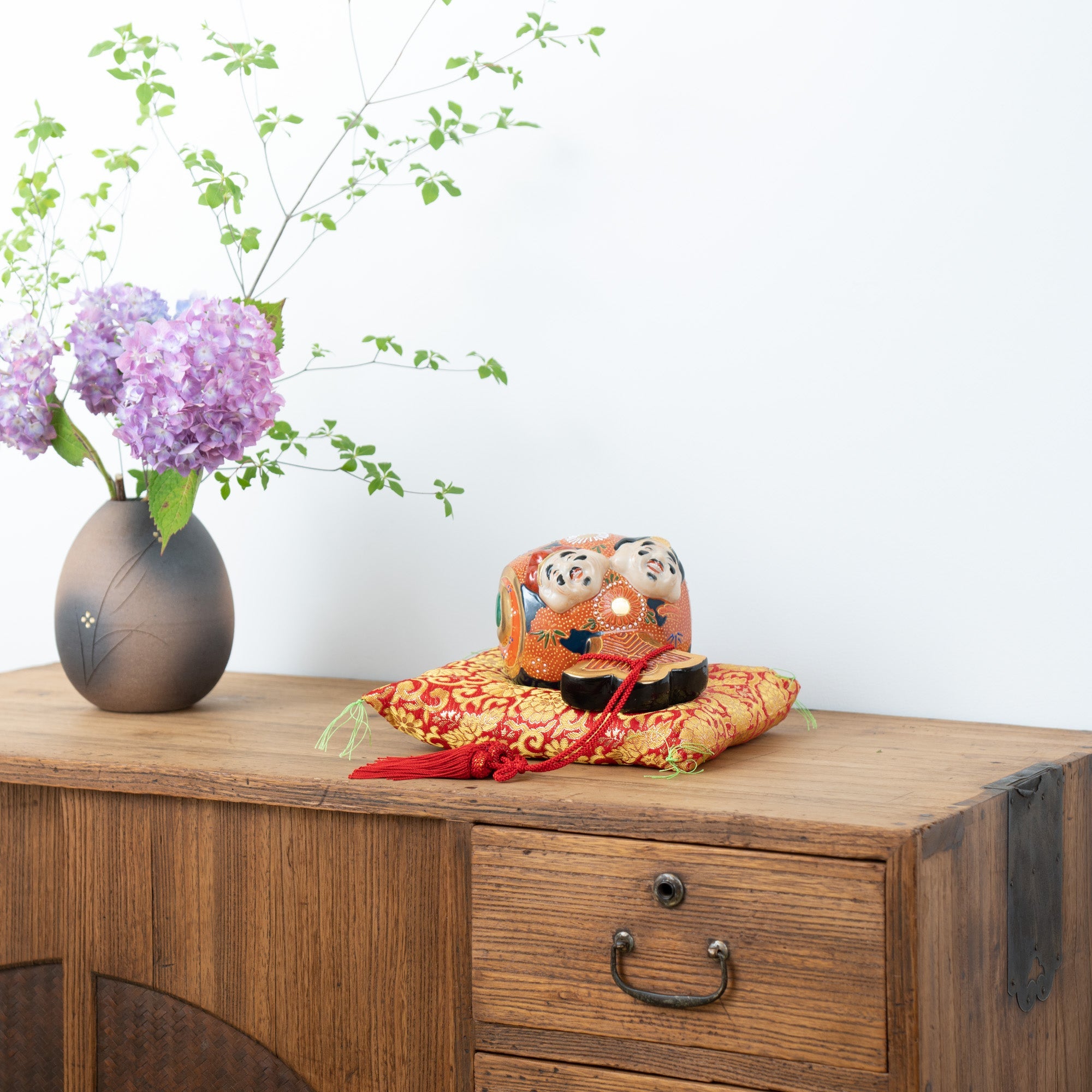
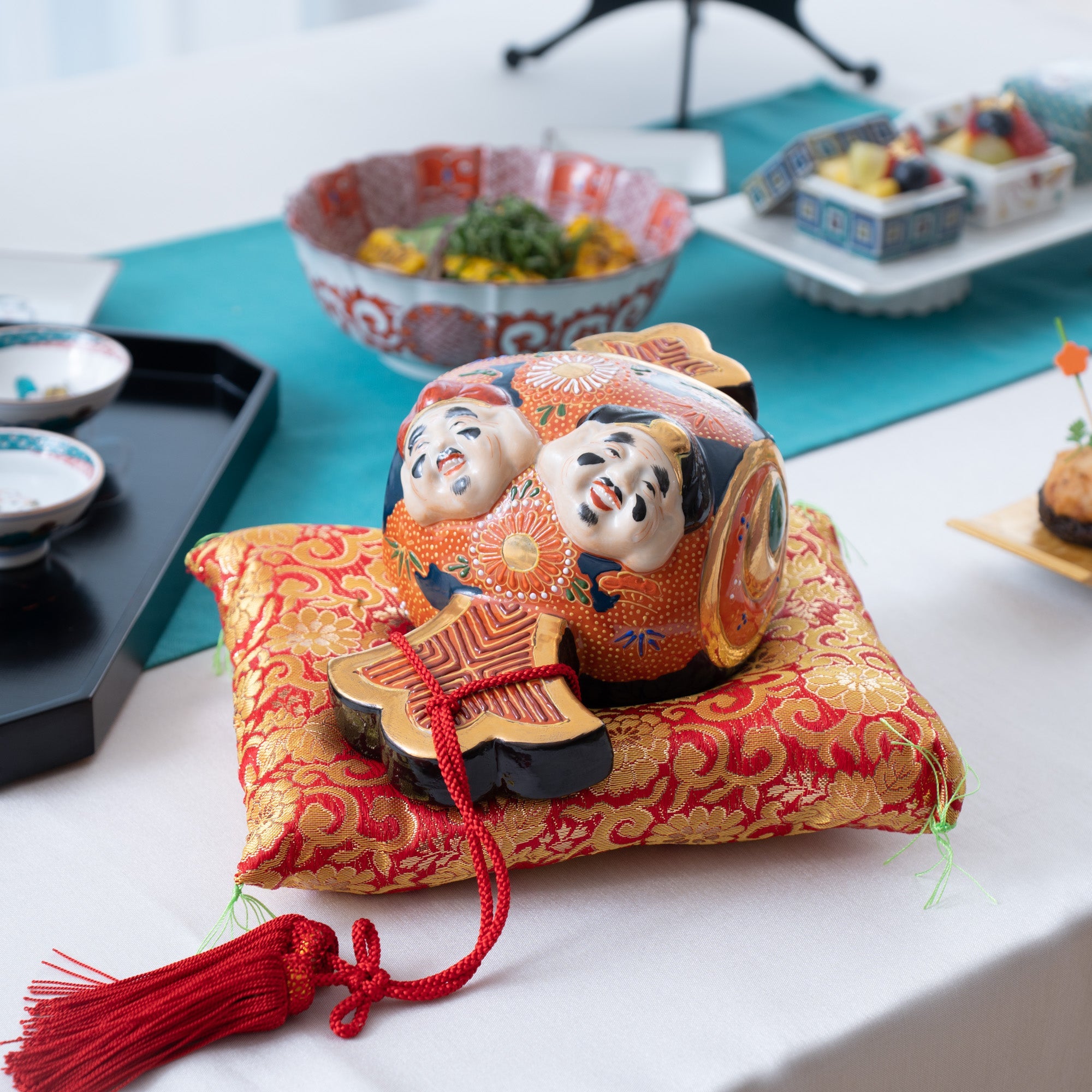
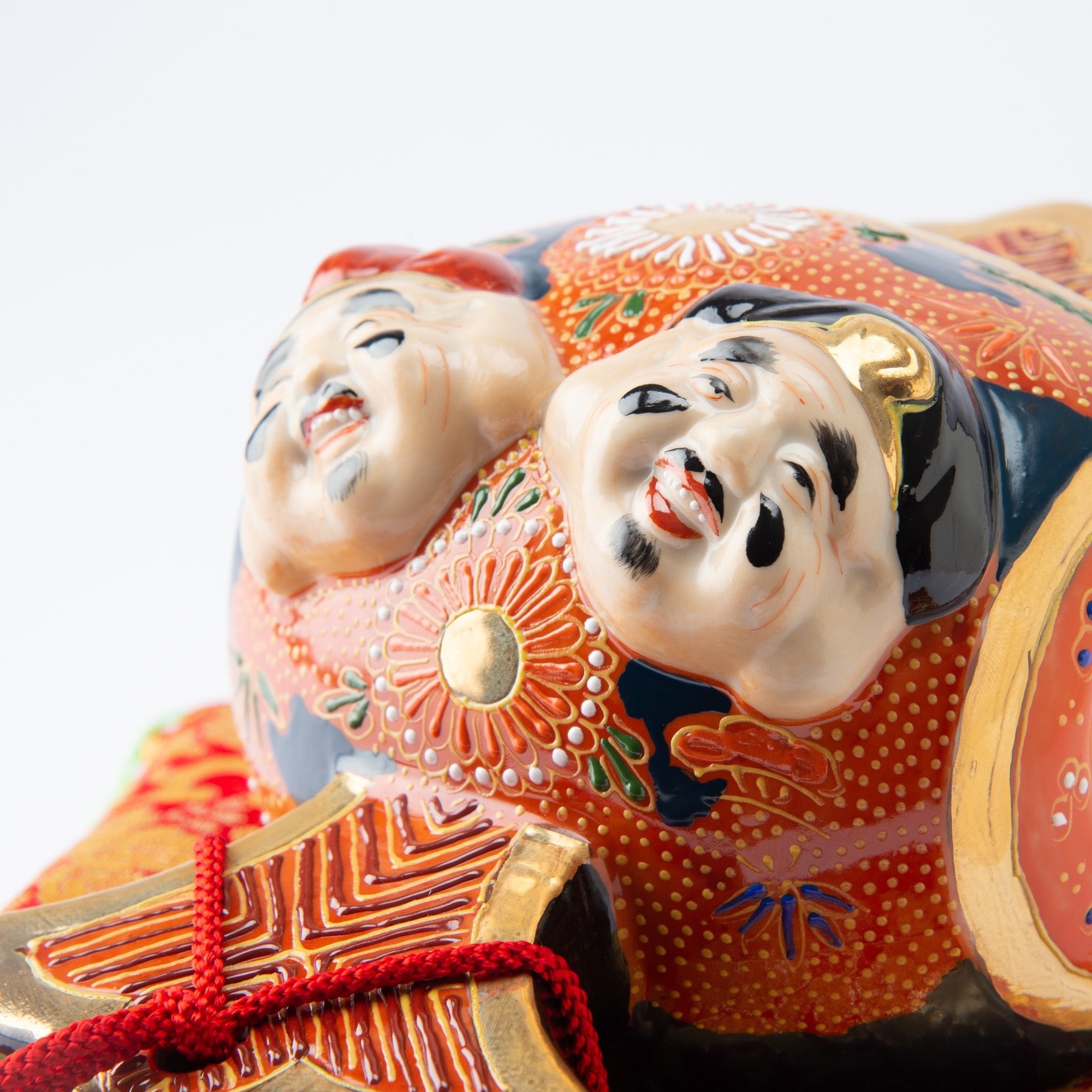
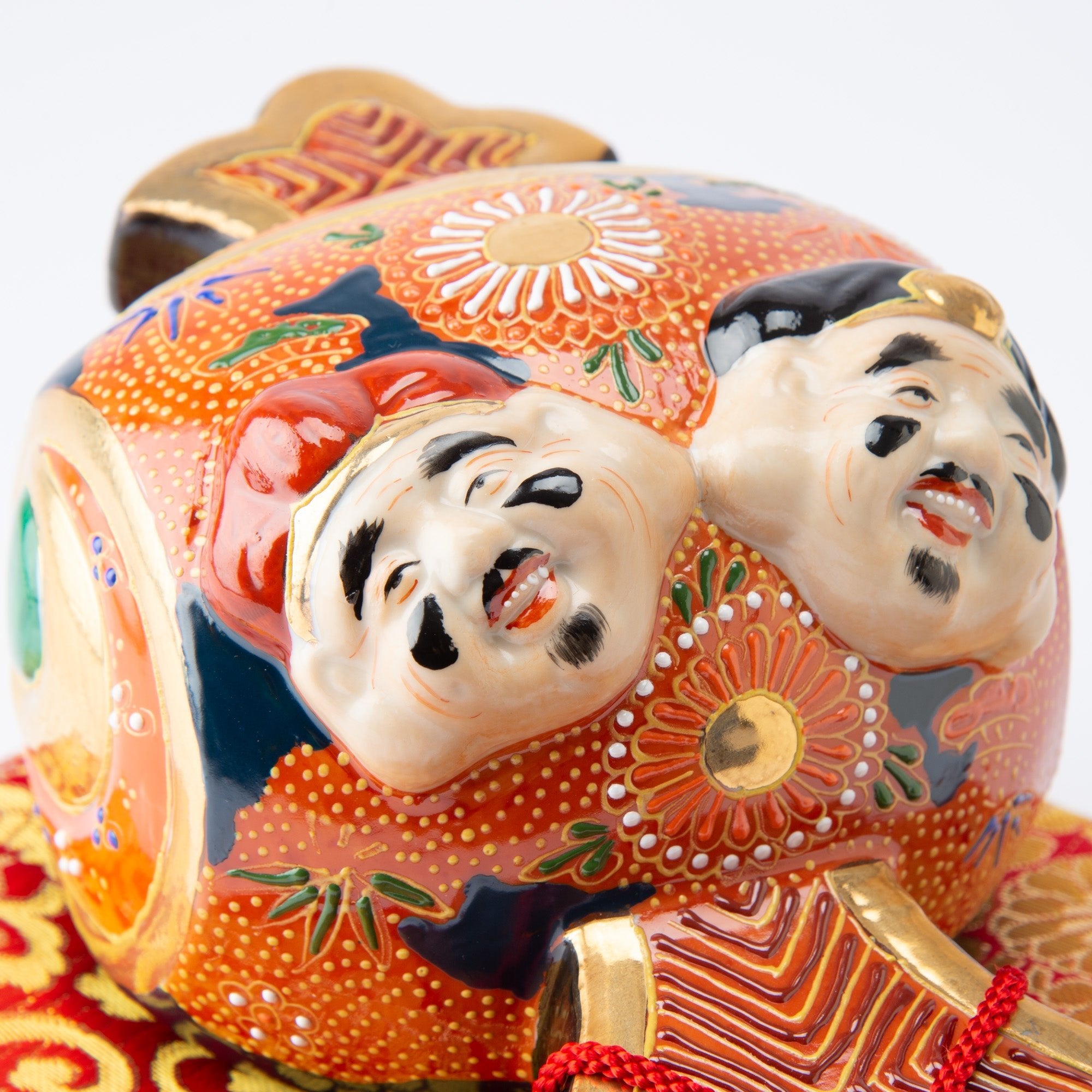
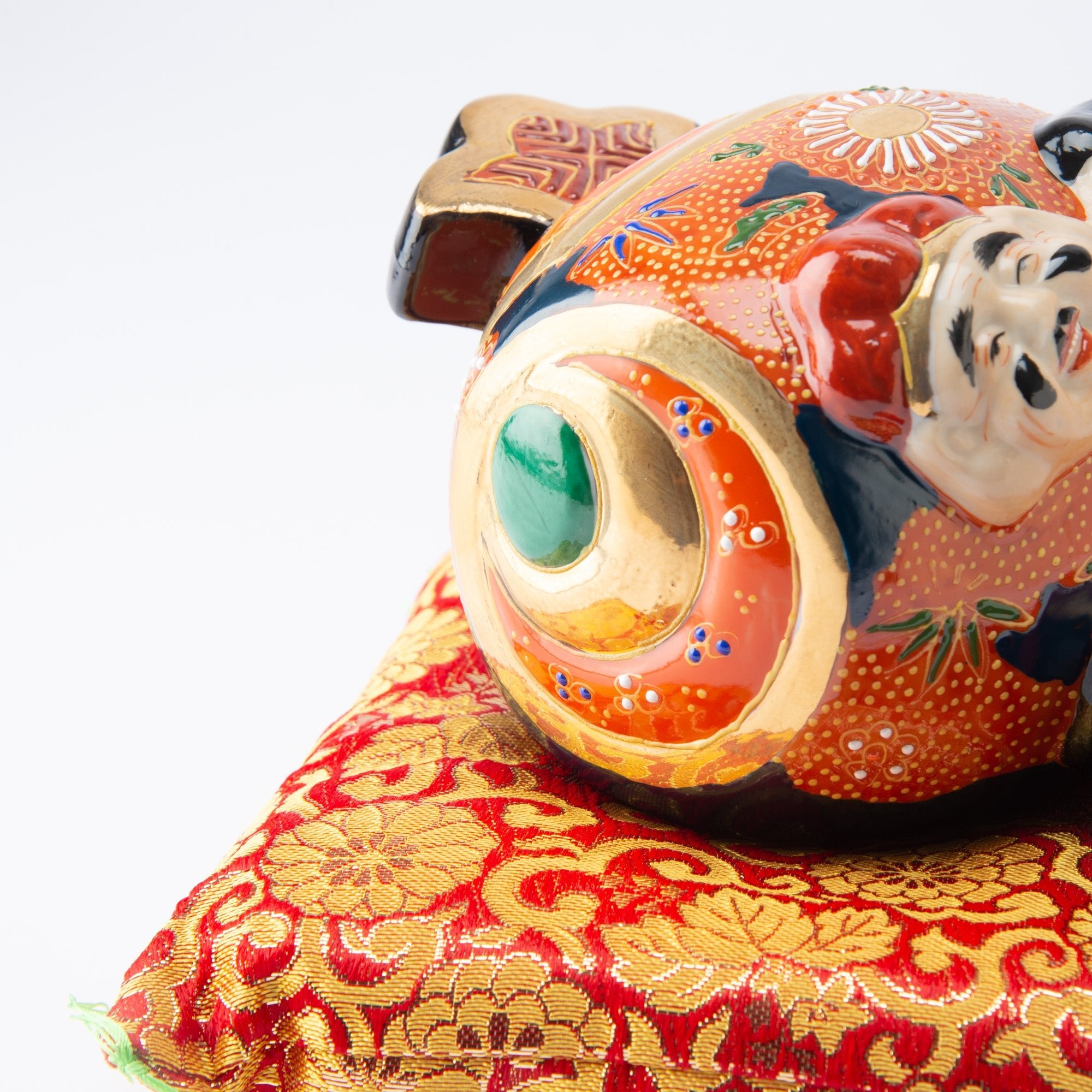
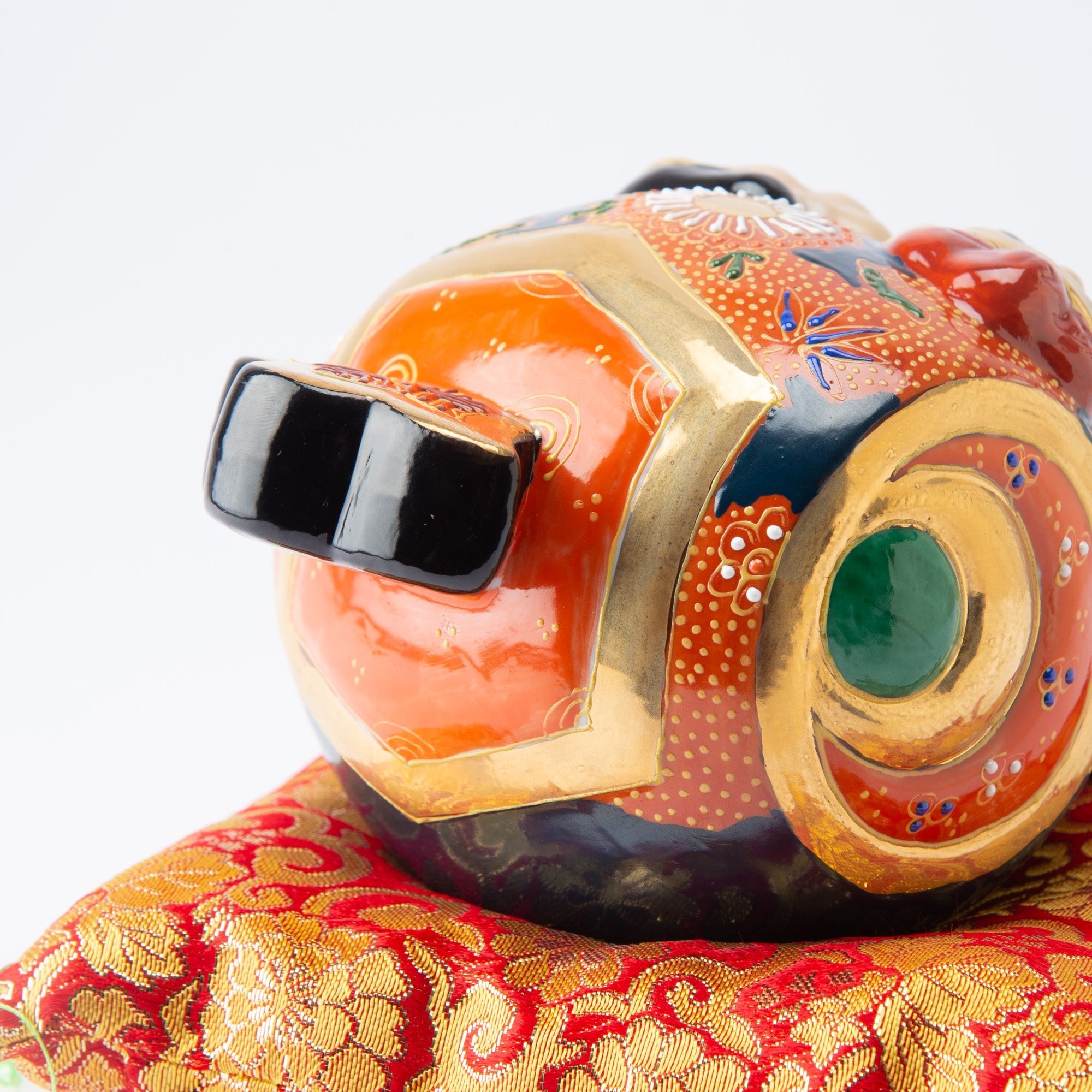
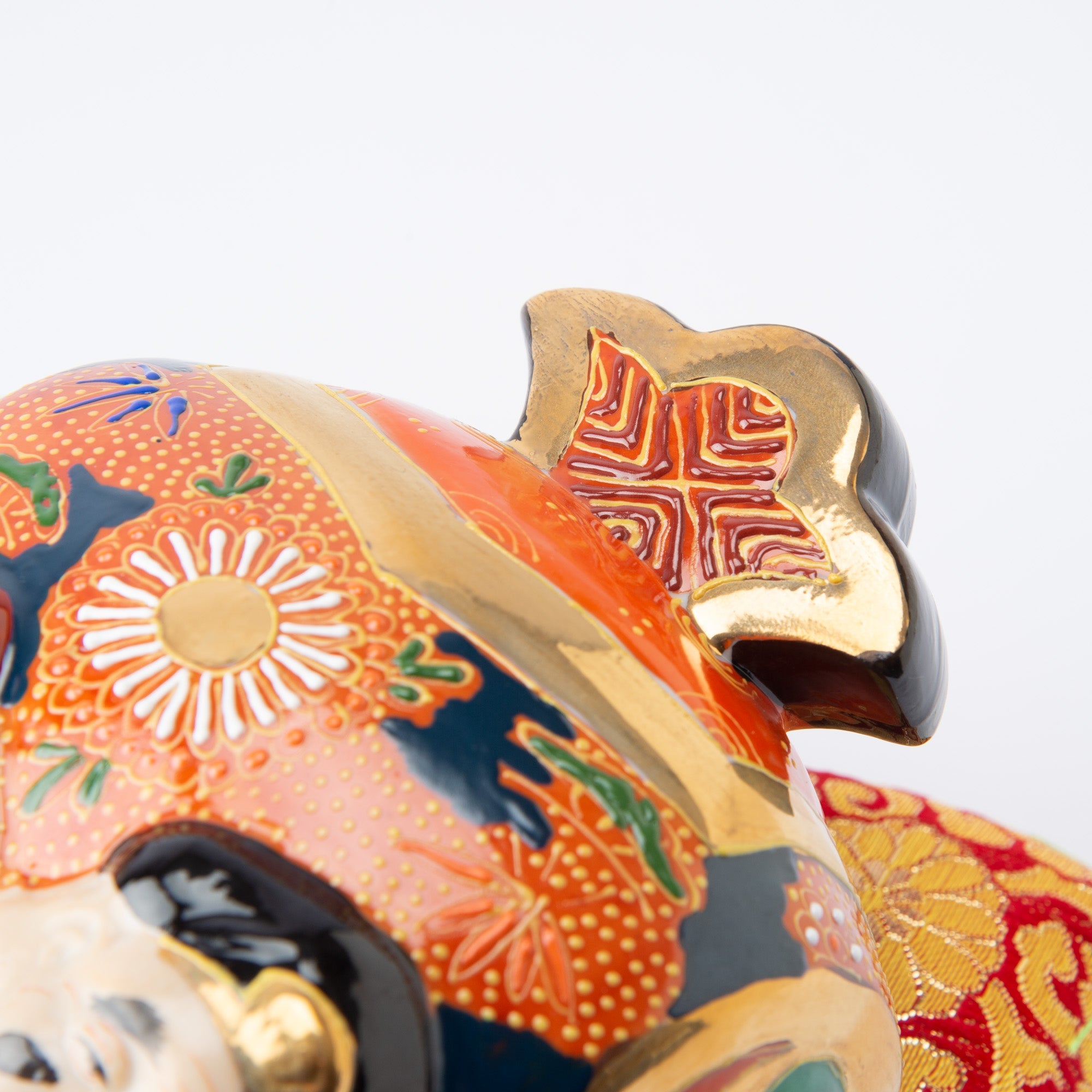
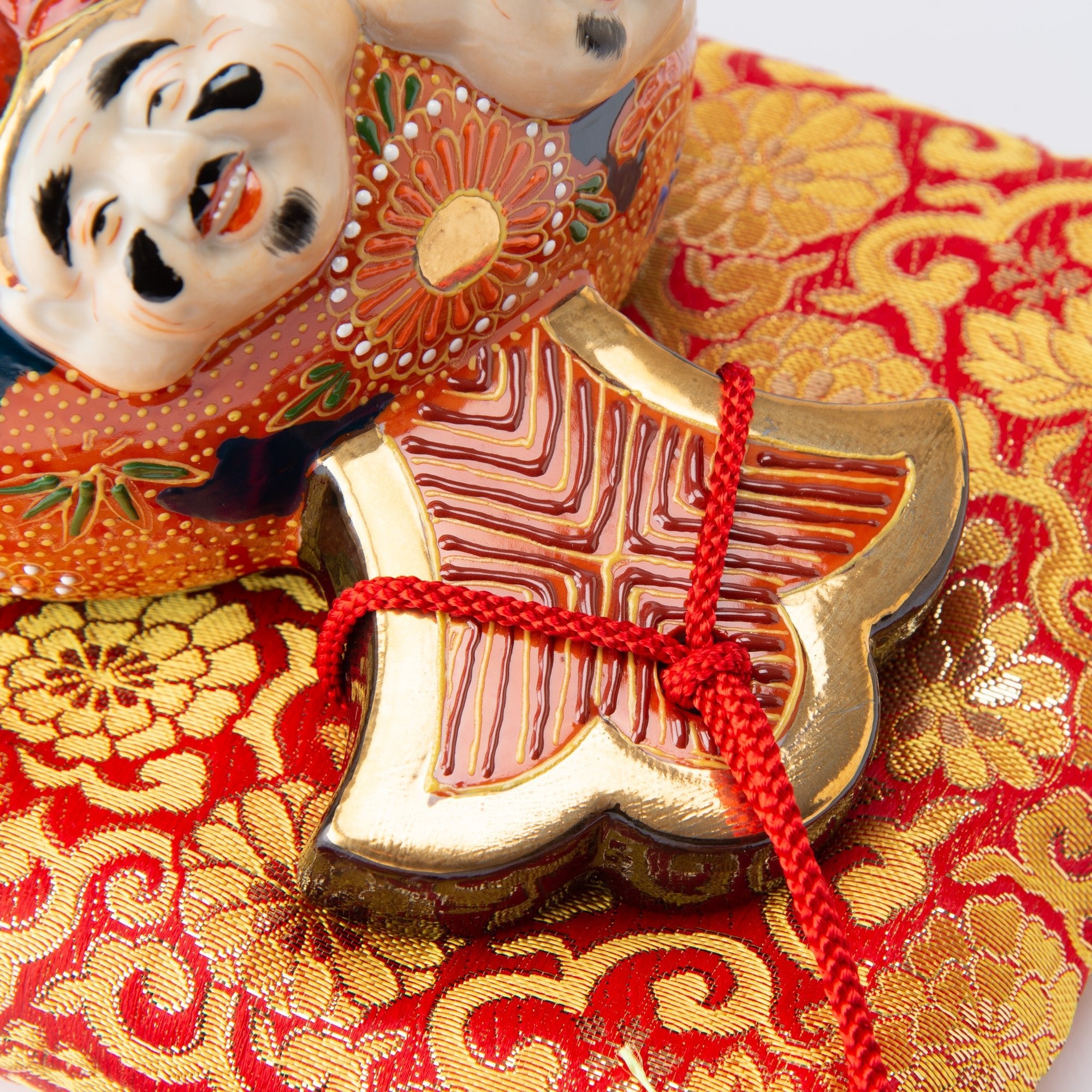
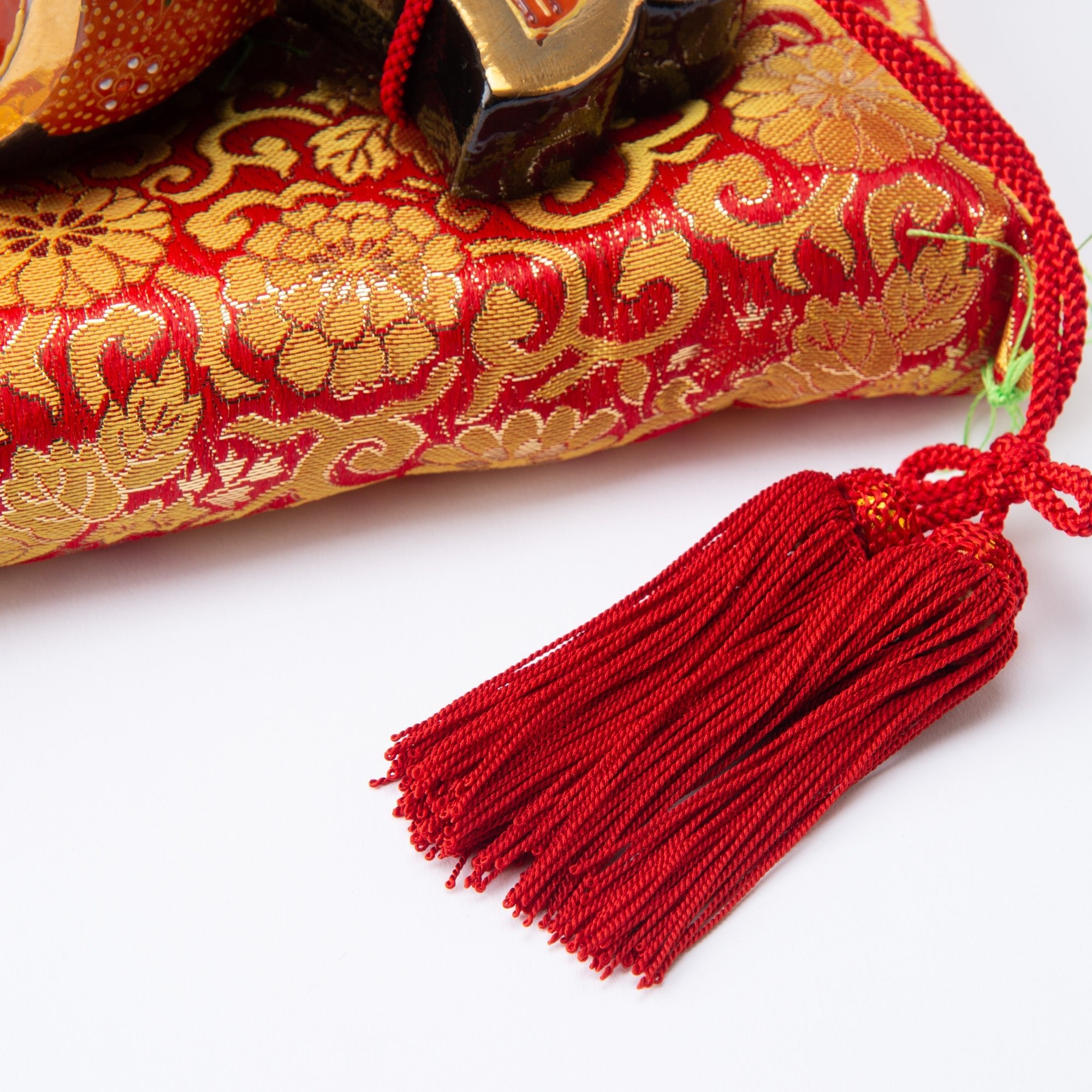
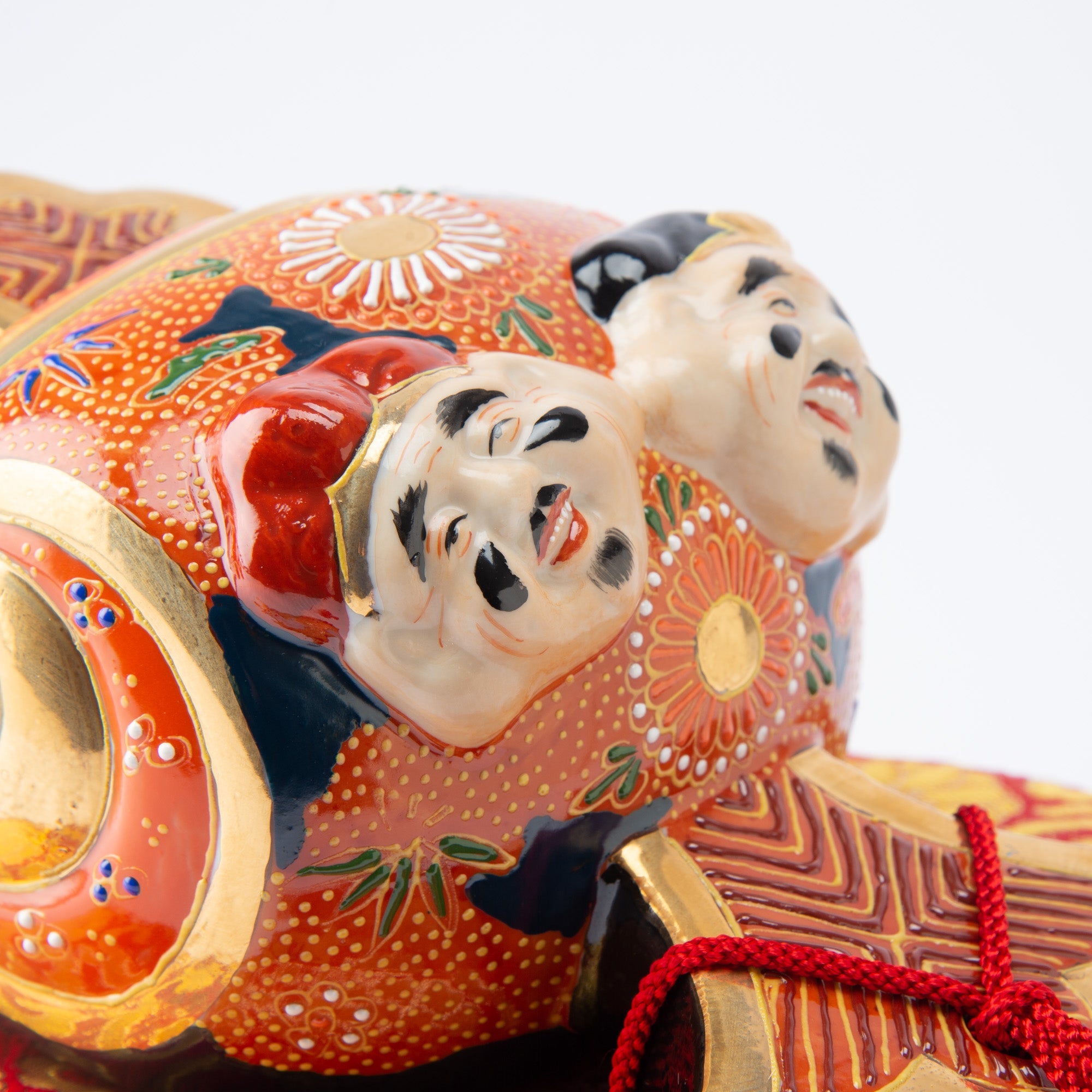
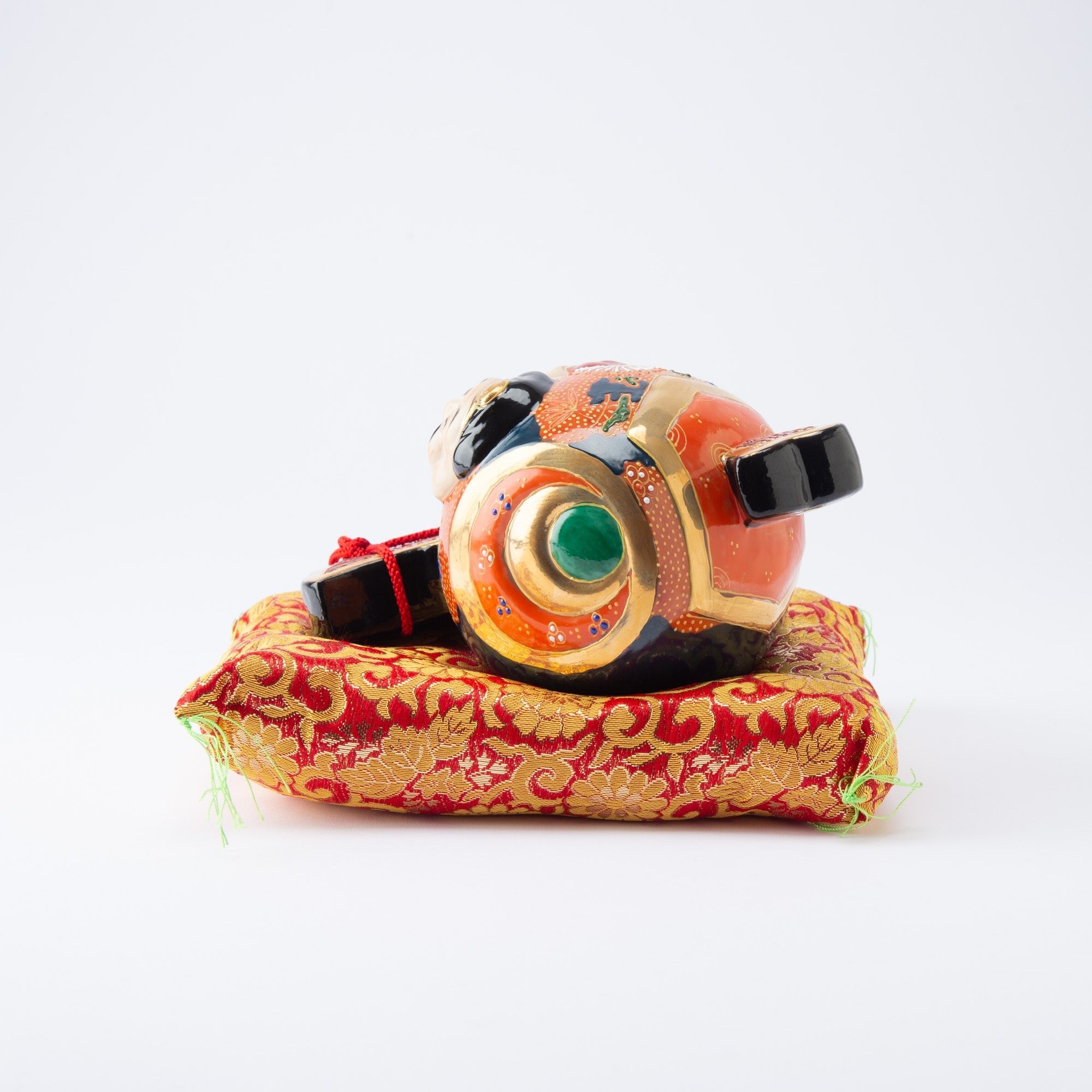
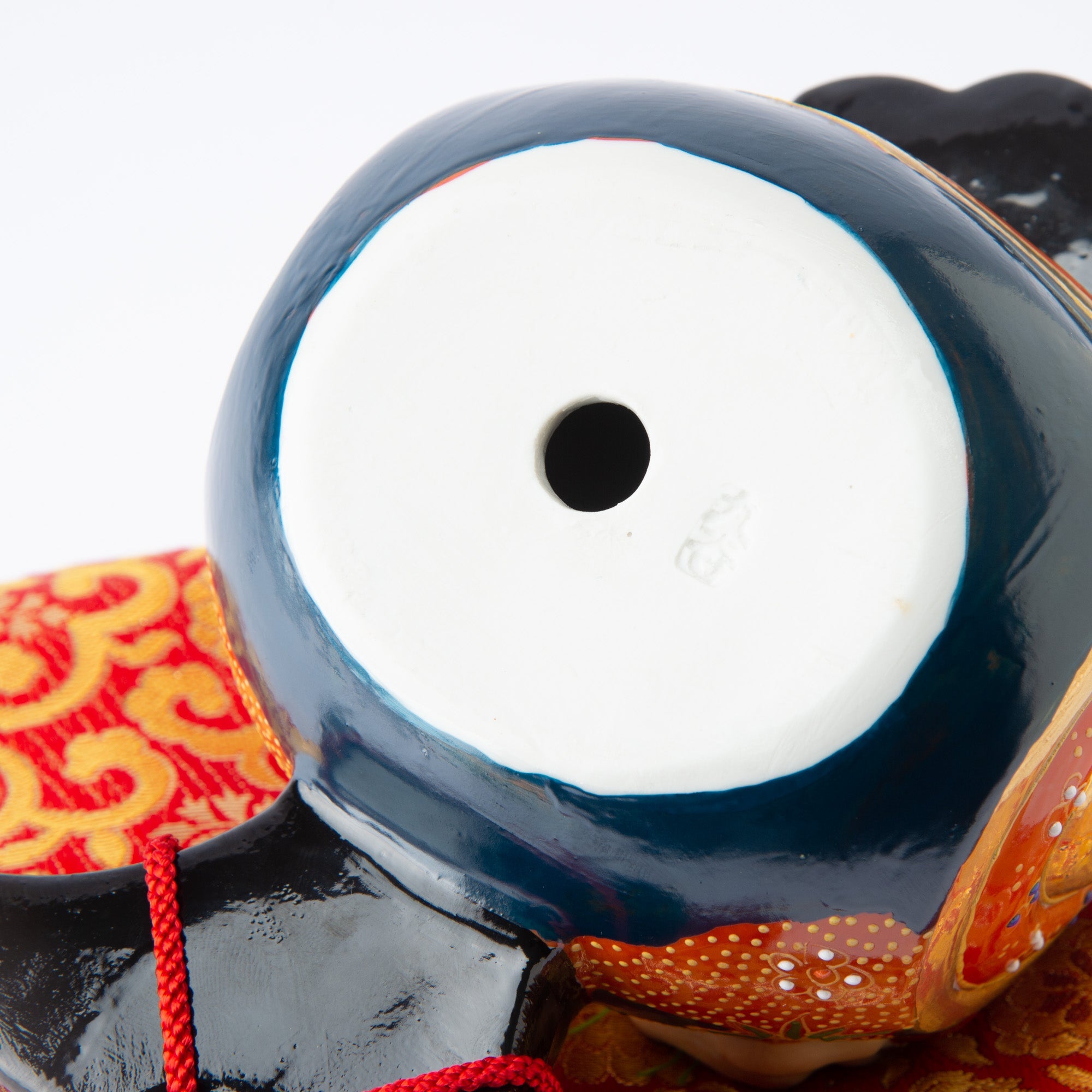
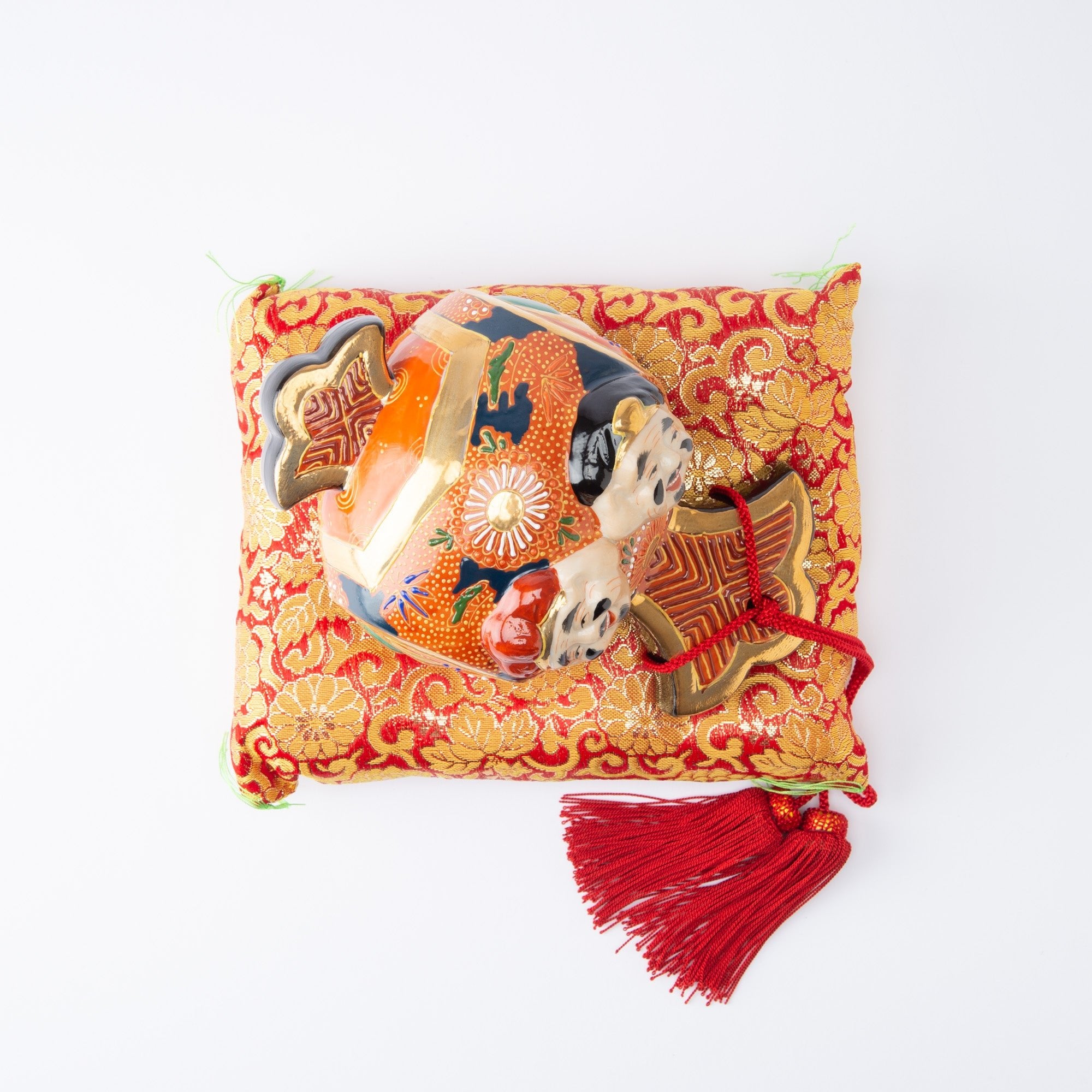
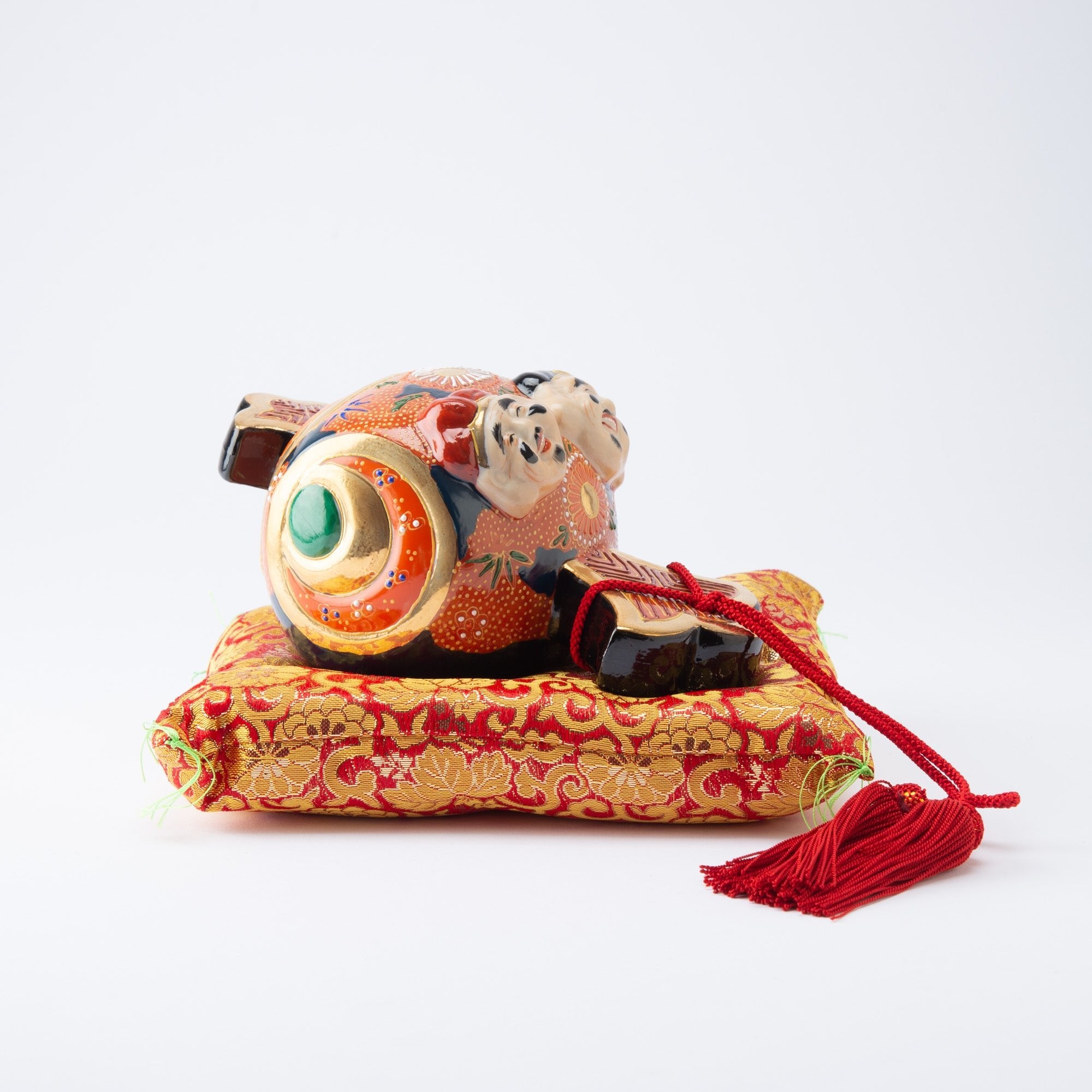
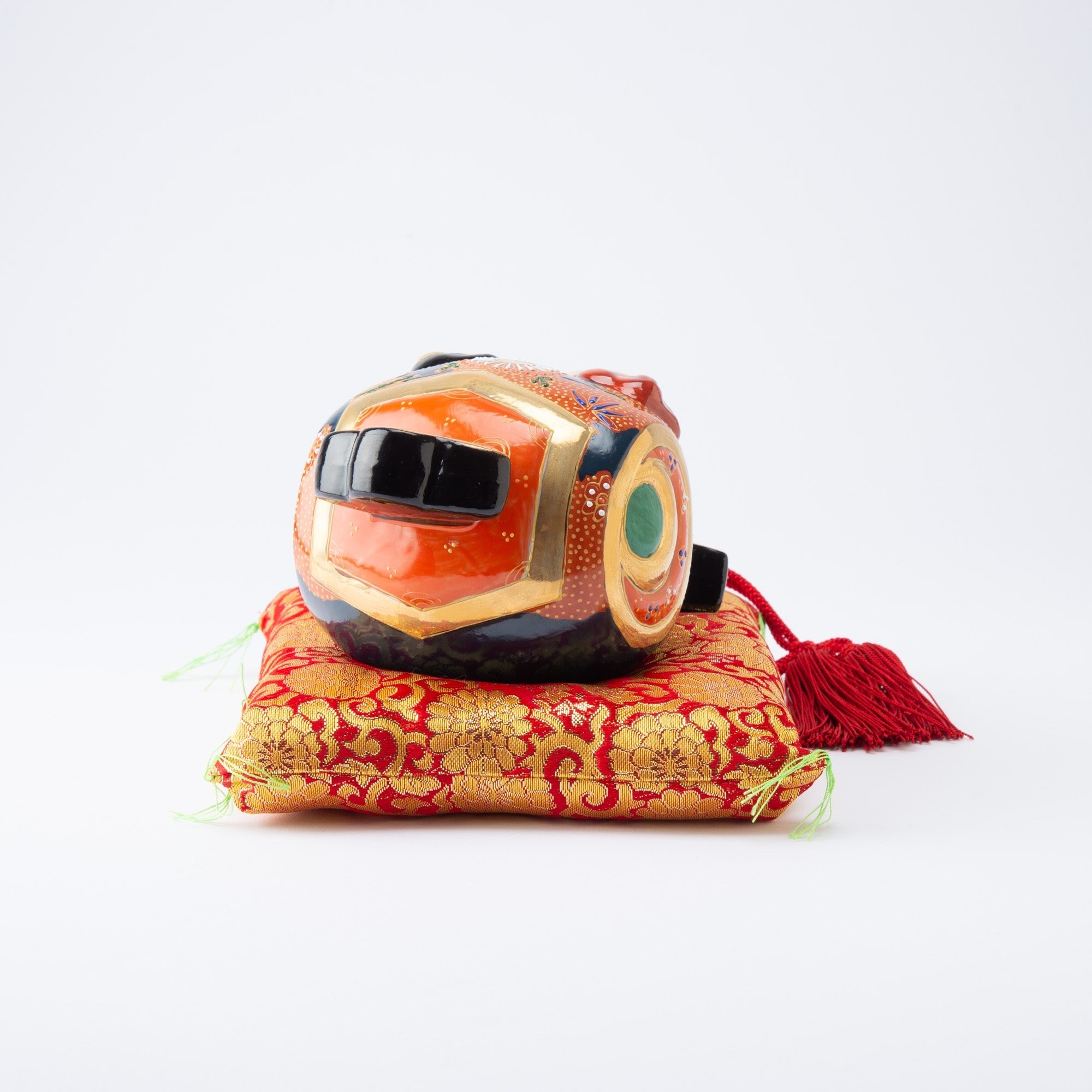
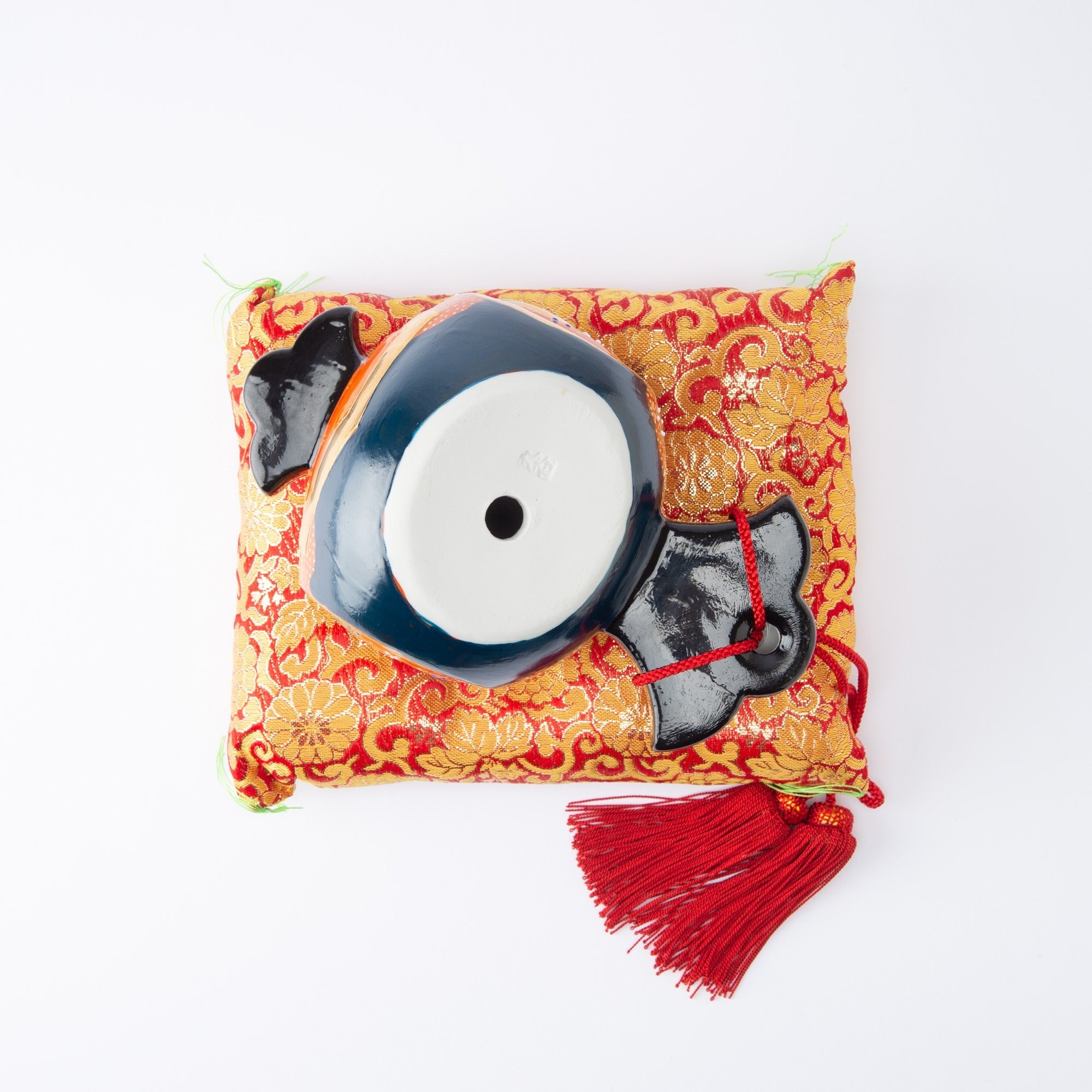
Mallet of Luck with Ebisu and Daikokuten
Estimated Shipping Widget will be displayed here!
This Kutani ware home decoration features a design of a colorful lucky mallet called a kozuchi with Ebisu and Daikokuten, two members of the Shichifukujin (Seven Lucky Gods). It is accompanied by a cushion made of gorgeous red and gold brocade. The handle of the kozuchi is adorned with a fringed red Edo braided cord. A kozuchi is a mythical lucky mallet that often appears in Japanese folklore. According to legend, anyone who holds and shakes it will have their wish granted.
Ebisu (on the left side) is the god of commerce and is usually depicted holding a sea bream symbolizing a big catch. Daikokuten (on the right side) is the god of property and typically holds a mallet.
Ebisu and Daikokuten are deities often enshrined together. There are various theories, but one suggests that Daikokuten is the father and Ebisu is the eldest son. In Japan, since ancient times, the left side (right from the viewer's perspective) has been considered the superior position.
The unique and traditional method used to decorate the surface of the mallet is a technique called mori-e, which is similar to slip trailing. Thick paint is squeezed out of an icchin, a dispenser with a fine tip, and carefully painted onto the surface to create patterns.
DETAILS
| Quantity | 1 mallet, 1 cushion |
| Size |
[Mallet] L 21 cm (8.5 in) x W 12.5 cm (4.9 in) x H 9.5 cm (3.7 in) [Cushion] L 18 cm (7.1 in) x W 22.5 cm (8.9 in) x H 4 cm (1.6 in) |
| Material | Porcelain, wood, felt |
Crafts
Kutani ware is a pottery produced in the Kaga region of Ishikawa Prefecture and it has a history of over 350 years. It is characterized by the heavy brilliance of the five colors of green, yellow, red, purple, and navy blue that are applied to the bold and daring lines. Its long history has evolved through the tireless efforts and enthusiasm of people who have sought innovation while maintaining tradition.
The beauty of the various styles and methods of painting is known as "Japan Kutani" and is highly regarded around the world.
Choose options


















Estimated Shipping Widget will be displayed here!
Japanese Dolls & Decor
Experience the timeless charm of Japanese dolls and figurines, symbols of cultural heritage and artistic craftsmanship that have been cherished for generations. Our curated collection of Japanese dolls showcases exquisite hand-painted details, elegant silhouettes, and the storied traditions that inspire their creation. Each piece transforms any space into a corner of refined beauty, inviting a deeper appreciation for the craftsmanship and history that make these Japanese doll treasures so enchanting. Whether you’re a seasoned collector or discovering these cultural icons for the first time, our selection promises to connect you with the enduring spirit and serenity of Japan.
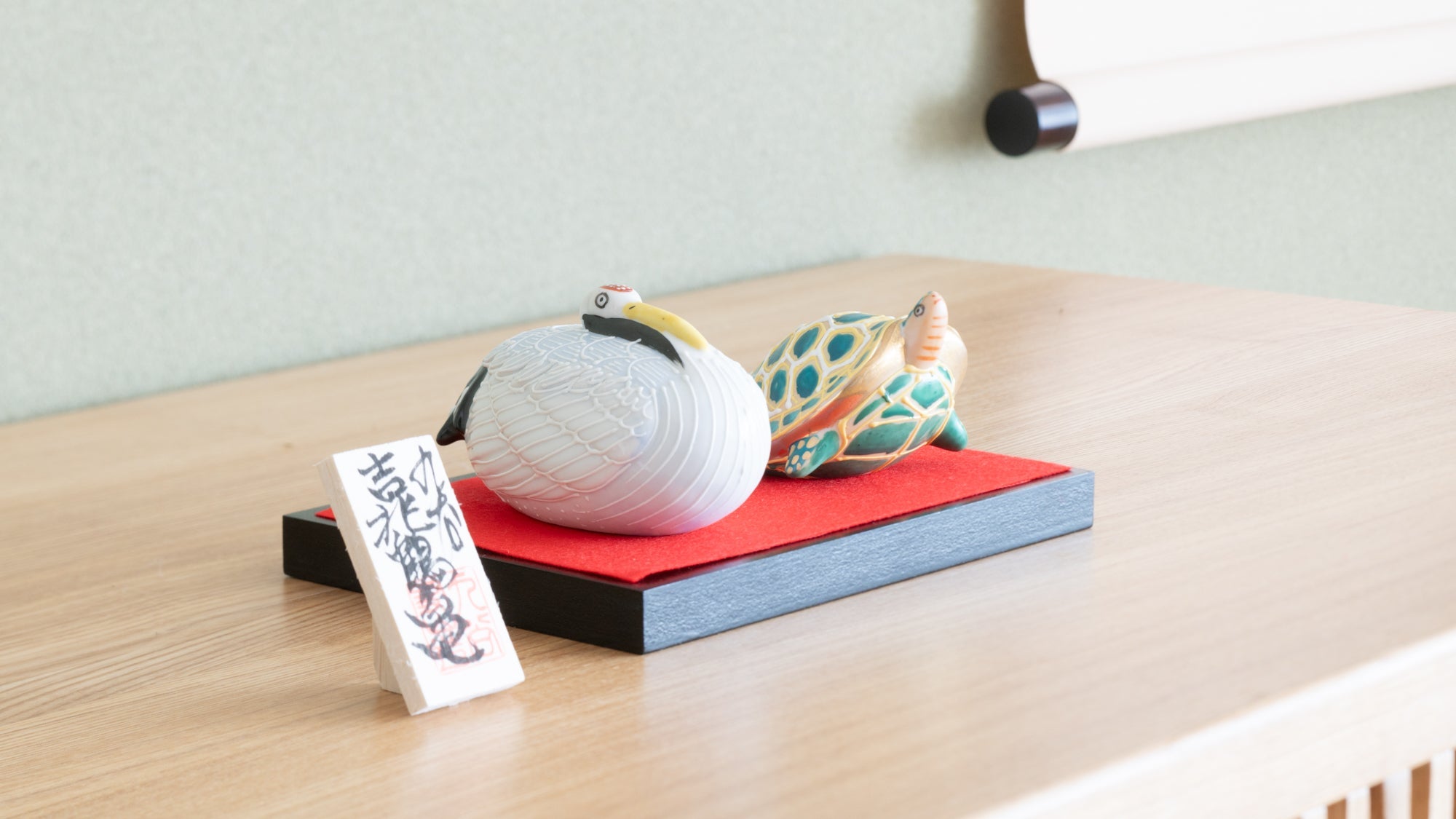
Tokyo's Hidden Tour: Seven Lucky Gods Pilgrimage

Kutani Elegance: An Exquisite Table Decor for a Sophisticated Office Party
